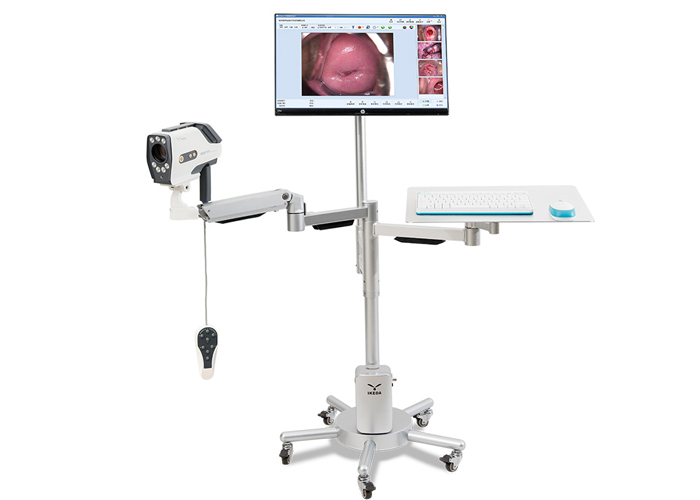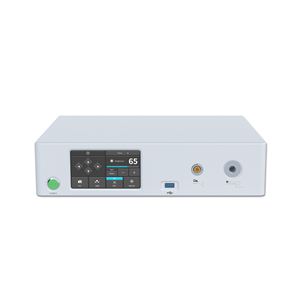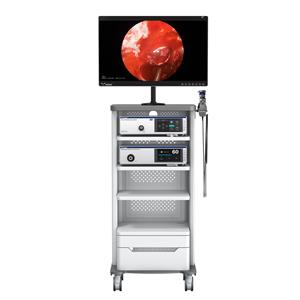Learn more about digital colposcope
The colposcopy is an indispensable gynecological examination instrument. The following editor will take you to learn more about the digital colposcopy.

1. The composition of digital colposcope
The digital colposcope is composed of a colposcope camera (including remote control and power adapter), a display (17 inches, 21.5 inches, 22 inches), a host, and a printer.
2. The main purpose and scope of application of digital colposcope
Digital colposcopy is used for screening and diagnosis of vulvar, vagina, and cervical diseases, and general cancer prevention of internal and external reproductive tract.
3. The working principle of digital colposcope
Digital colposcopy is a general morphological diagnosis method. It uses a high-resolution color camera to magnify the vaginal cervix mucosa. Through computer image processing, the surface morphology and terminal vascular network changes can be observed. The surface layer of the cervix is not visible to the naked eye. To the minimal lesions.
4. Digital colposcopy method
●Clean the product first. It is best to wipe and disinfect the probe with medical alcohol before and after use.
●Turn on the instrument, set the image in the real-time display state, and prepare for inspection;
●Within 24 hours before the examination, there should be no vaginal operations, including washing, examination, medication and sexual intercourse, etc. Those with inflammation should be controlled first;
●Let the subject take the bladder lithotomy position, and use a vaginal dilator to expand the vagina to expose the cervix (not dipped in lubricant to avoid affecting the observation);
●Wipe off cervical secretions with a cotton ball of normal saline (do not rub with force, so as not to cause bleeding and affect the observation);
●Move the camera to about 30-40cm away from the cervix and about 25-35cm away from the vulva, adjust the focus, and zoom in on the image for observation.
●Sometimes, in order to further distinguish the squamous epithelium or columnar epithelium on the surface of the cervix to understand the contraction reaction of blood vessels and determine the nature of the lesions on the surface of the cervix, some drugs must be applied to the surface of the cervix to make the image clearer and more conducive to diagnosis;
(1) 3% acetic acid solution: After coating the cervix with this concentration solution, the columnar epithelium rapidly edema and whitens, showing a typical "grape bunch" change, but the squamous epithelium does not have this phenomenon, and the squamous epithelium and the columnar junction change It is very clear; it can also be seen that the blood vessels contracted and then expanded after the application of 3% acetic acid solution. Punctate or spiral blood vessels were also seen, but gradually became blurred after a few seconds; the squamous epithelium around the gland’s opening turned white and appeared "volcanic" Mouth" shape.
(2) Iodine test: Use a sterile cotton ball to wipe off the mucus on the surface of the cervix, and then use a small cotton ball dipped in iodine solution to evenly coat the cervical fornix. Coloring is negative for iodine test, because normal cervix or vaginal squamous epithelium is rich in glycogen, which can be stained brown after applying iodine; non-staining is positive for iodine test, which is mainly normal cervical tubular epithelium or columns covering the erosion surface Epithelium, squamous epithelium dysplasia or epithelial cancer. In postmenopausal women, the level of estrogen decreases and the glycogen content in the cells decreases. Sometimes the iodine test may not be colored or the coloring is very light. Therefore, the iodine test is not a specific test for detecting cancer.
(3) 40%-50% trichloroacetic acid: After the condyloma acuminatum is coated with trichloroacetic acid, it immediately presents thorn-like or rod-like protrusions, and the boundary with the normal mucosa is clear. After the pseudocondyloma is coated with trichloroacetic acid, the mucosa becomes white and the surface is obviously uneven. , Rough.
●When examining suspicious parts, take biopsy and send it for pathological examination.




